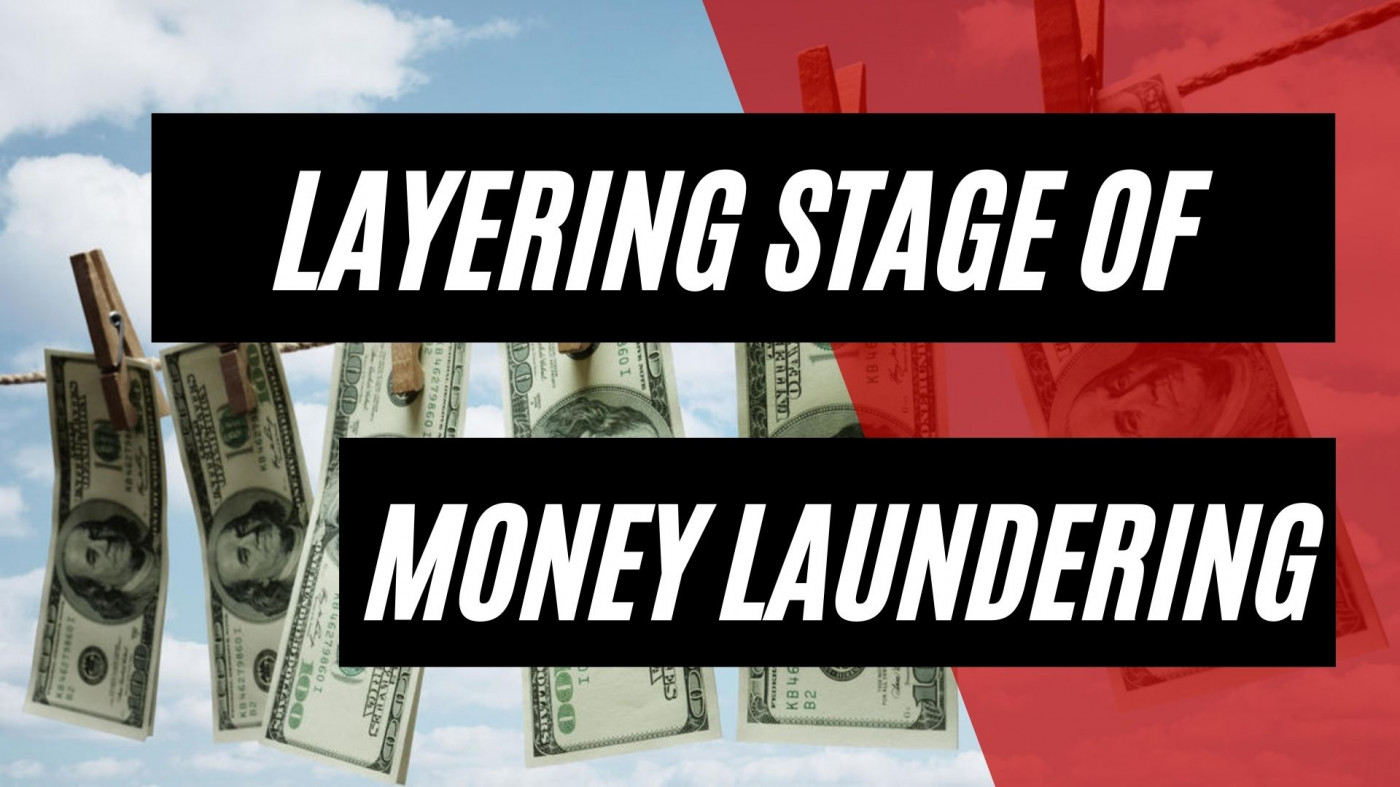Understanding Money Laundering
Money laundering is a serious criminal activity that involves concealing the origin of illegally obtained funds and making them appear legitimate. This process allows criminals to profit from illegal activities without detection. Money laundering is frequently associated with organized crime and is considered a crime in many jurisdictions.
Definition and Basics
The definition of money laundering varies depending on the jurisdiction. In the United States, it involves engaging in financial transactions to hide the identity, source, or destination of unlawfully obtained money. On the other hand, the common law definition in the United Kingdom includes taking actions with property derived from crime to disguise its criminal origin or obscure beneficial ownership.
Money laundering typically involves a complex series of transactions that make it difficult to trace the origin of the funds. Criminals use various techniques to launder money, such as layering, where funds are moved through multiple accounts and jurisdictions to obscure their source. They may also use smurfing, which involves breaking large amounts of cash into smaller deposits to avoid suspicion.
Consequences of Money Laundering
Money laundering has severe consequences that extend beyond the realm of criminal activity. It poses a significant threat to the stability of financial institutions, as it can undermine their integrity and erode public confidence in the financial system. This can lead to decreased foreign investment and hamper economic growth.
The consequences of money laundering also extend to national economies. When illicit funds are integrated into the legitimate financial system, they can distort economic indicators and create an uneven playing field for businesses. The presence of laundered money can give rise to inflation, increase income inequality, and hinder economic development.
Furthermore, money laundering enables the financing of further criminal activity. By legitimizing the proceeds of illegal activities, criminals can fund other illicit operations, such as drug trafficking, terrorism, or corruption. This perpetuates a cycle of criminal behavior and poses a threat to the safety and security of societies.
It is essential that governments, financial institutions, and regulatory authorities work together to combat money laundering. The implementation of robust anti-money laundering (AML) measures and the enforcement of AML laws and regulations are crucial in preventing and detecting money laundering activities.
By understanding the definition and consequences of money laundering, professionals in compliance, risk management, and anti-money laundering can better appreciate the importance of their roles in preventing and combating this illicit activity.
Anti-Money Laundering (AML) Measures
To combat the threat of money laundering, a range of anti-money laundering (AML) measures have been implemented. These measures aim to detect and prevent money laundering activities by establishing legal frameworks, promoting collaboration, and enhancing information sharing among financial institutions and regulatory bodies.
AML Laws and Regulations
Efforts to prevent money laundering include the implementation of AML laws and regulations. These laws require financial institutions to establish strict compliance programs and report suspicious transactions to authorities. By adhering to AML laws and regulations, financial institutions play a vital role in detecting and deterring money laundering activities.
Key AML laws and regulations include the Bank Secrecy Act (BSA) in the United States. The BSA mandates that financial institutions report transactions exceeding $10,000 to the Internal Revenue Service (IRS) and maintain records of suspicious transactions. Violations of the BSA can result in substantial fines and imprisonment (Investopedia). In the United States, the Financial Crimes Enforcement Network (FinCEN) oversees the administration of the BSA and other AML regulations for financial institutions (Investopedia).
Other countries have their own AML laws and regulations tailored to their specific jurisdictions. These regulations often require financial institutions to implement customer identification programs, conduct risk assessments, monitor transactions, and report suspicious activities to their respective financial intelligence units.
Collaboration and Information Sharing
Collaboration between financial institutions, law enforcement agencies, and regulatory bodies is crucial in effectively combating money laundering. By sharing information and resources, these entities can work together to investigate and prosecute individuals involved in money laundering activities.
Collaborative efforts involve sharing intelligence on emerging money laundering techniques, identifying high-risk individuals and transactions, and coordinating investigations. This collaboration helps establish a comprehensive understanding of money laundering trends and enables proactive measures to prevent illicit financial activities.
Financial institutions, through their AML programs, contribute to this collaborative approach by promptly reporting suspicious transactions and cooperating with law enforcement agencies. They also participate in forums and working groups dedicated to combating money laundering, further enhancing collaboration and information sharing.
By fostering collaboration and information sharing, the fight against money laundering becomes more effective and efficient. It allows for the pooling of expertise, resources, and technologies necessary to detect and disrupt complex money laundering schemes.
To support AML efforts, technological solutions such as transaction monitoring systems are employed. These systems analyze vast amounts of transactional data to identify patterns and anomalies that may indicate potential money laundering activity. By leveraging advanced algorithms and machine learning, these systems can enhance the detection and reporting of suspicious transactions.
In summary, AML measures encompass a range of laws, regulations, and collaborative initiatives designed to prevent money laundering. Adhering to AML laws and regulations helps ensure compliance and accountability, while collaboration and information sharing enable a collective and coordinated approach to combat money laundering effectively. By implementing these measures, financial institutions and regulatory bodies contribute to the ongoing fight against illicit financial activities.
Common Money Laundering Schemes
Money laundering schemes have become increasingly sophisticated, requiring continuous efforts to detect and prevent illicit financial activities. Understanding the techniques and strategies employed by money launderers is essential for developing effective countermeasures. Additionally, staying informed about emerging trends in money laundering helps professionals in compliance, risk management, and anti-money laundering to stay one step ahead.
Techniques and Strategies
Money laundering schemes involve various techniques and strategies aimed at disguising the illicit origins of funds and integrating them into the legitimate financial system. Some common techniques employed by money launderers include:
-
Layering: This technique involves creating a complex web of financial transactions to obscure the origin of funds. It often includes multiple transfers between accounts, both domestic and international, making it challenging to trace the original source of the money.
-
Placement: During the placement stage, criminals introduce their illicit funds into the legitimate financial system. This can be done by depositing cash into banks, purchasing assets, or making high-value transactions that blend with legitimate business activities.
-
Integration: In the integration stage, the laundered funds are seamlessly merged with legitimate assets or investments. This can be achieved by purchasing real estate, investing in businesses, or even creating shell companies to obscure the true ownership of assets.
-
Use of intermediaries: Money launderers often employ intermediaries, such as money mules or professional facilitators, to conduct transactions on their behalf, further distancing themselves from the illicit funds.
-
Trade-based money laundering: Criminals exploit the complexity of international trade transactions to launder money. This involves manipulating invoices, over- or under-invoicing goods, or using trade finance instruments to move funds across borders while disguising their illicit nature.
Emerging Trends in Money Laundering
The landscape of money laundering is constantly evolving, driven by advancements in technology and criminal ingenuity. Professionals in the field must stay vigilant and adapt to emerging trends. Some notable trends in money laundering include:
-
Cryptocurrencies: The rise of cryptocurrencies has introduced new challenges in combating money laundering. Criminals exploit the anonymity and decentralized nature of cryptocurrencies, using privacy coins and tumblers to obfuscate the origins of illicit funds.
-
Decentralized Finance (DeFi): Criminals have started leveraging decentralized finance platforms to launder money. The lack of centralized control and the pseudonymity associated with DeFi platforms present challenges in detecting and preventing illicit financial activities (Linkurious).
-
Emerging payment methods: The proliferation of alternative payment methods, such as mobile payment apps and prepaid cards, has created new avenues for money laundering. These methods offer convenience and speed, making it crucial for regulators and financial institutions to adapt their systems to effectively monitor and mitigate the risk associated with these payment channels.
-
Art market: Money launderers have increasingly turned to the art market to launder illicit funds. The lack of transparency and subjective valuation in the art market make it an attractive avenue for criminals to move and hide their money.
To counter these evolving money laundering schemes, collaboration between financial institutions, regulatory bodies, and law enforcement agencies is crucial. Sharing information and implementing effective controls are essential components of preventing and detecting illicit financial activities (Linkurious). By staying informed about the latest techniques and emerging trends, professionals in the field can enhance their ability to safeguard the financial system from money laundering risks.
Preventing Money Laundering
To effectively combat money laundering, it is crucial to have robust prevention measures in place. This section focuses on two key aspects of preventing money laundering: regulatory requirements and compliance, as well as tools and resources for professionals.
Regulatory Requirements and Compliance
Preventing money laundering starts with the implementation of comprehensive anti-money laundering (AML) laws and regulations. These measures aim to detect and deter money laundering activities by requiring financial institutions to establish strict compliance programs and report suspicious transactions to authorities (NCJRS Virtual Library). Some of the key regulations include:
-
The Bank Secrecy Act (BSA): The BSA mandates that financial institutions report transactions exceeding $10,000 to the Internal Revenue Service (IRS). Violations of the BSA can result in fines up to $250,000 and imprisonment for up to five years. The BSA also imposes regulations on recordkeeping, requiring financial institutions to maintain and share records of transactions that appear suspicious.
-
The USA PATRIOT Act: Enacted after the 9/11 attacks, the USA PATRIOT Act strengthens anti-money laundering regulations. It requires financial institutions to establish AML programs, conduct due diligence on customers, and report suspicious activities.
Compliance with these regulatory requirements is essential for financial institutions and other businesses vulnerable to money laundering risks. Implementing strong internal controls, conducting regular risk assessments, and ensuring staff receive appropriate training on AML practices are vital steps to prevent money laundering. Additionally, customer identification programs (CIPs) and suspicious transaction reporting (STR) play crucial roles in detecting and preventing money laundering activities.
Tools and Resources for Professionals
Professionals working in compliance, risk management, and anti-money laundering can benefit from various tools and resources to enhance their efforts in preventing money laundering. Some notable resources include:
-
Financial Intelligence Units (FIUs): FIUs are organizations responsible for receiving, analyzing, and disseminating financial information to combat money laundering. They serve as the central hub for sharing suspicious activity reports and financial intelligence among law enforcement agencies and financial institutions (/financial-intelligence-units).
-
Trade-Based Money Laundering Detection Tools: Trade-based money laundering is a common technique used by criminals to move illicit funds across borders. Specialized software and platforms are available to help professionals detect and prevent trade-based money laundering (/trade-based-money-laundering).
-
Transaction Monitoring Systems: These systems utilize advanced algorithms and artificial intelligence to analyze vast amounts of financial data and identify potentially suspicious transactions. They play a crucial role in detecting patterns and anomalies that could indicate money laundering activities (/transaction-monitoring-systems).
-
AML Policies and Procedures: Financial institutions and businesses should establish comprehensive AML policies and procedures to guide their staff in adhering to regulatory requirements and best practices (/aml-policies-and-procedures). These policies outline the steps to be taken when onboarding customers, conducting due diligence, and reporting suspicious activities.
In addition to these resources, organizations such as the Financial Industry Regulatory Authority (FINRA) and the Federal Deposit Insurance Corporation (FDIC) provide tools, research reports, training, and guidance to professionals in the field of anti-money laundering. These resources help professionals stay updated on the evolving landscape of money laundering and strengthen their prevention efforts.
By adhering to regulatory requirements and utilizing tools and resources available, professionals can proactively prevent money laundering and contribute to the overall integrity and stability of the financial system.
Challenges and Future of AML
As the fight against money laundering continues, new challenges and emerging trends require constant adaptation and enhancements in anti-money laundering (AML) efforts. Two key areas of concern are the impact of cryptocurrencies on money laundering and the need to enhance overall AML measures.
Cryptocurrencies and Money Laundering
The rise of cryptocurrencies, such as Bitcoin, has presented both opportunities and challenges in combating money laundering. Criminals have exploited the privacy features of certain cryptocurrencies, known as privacy coins, as well as tumblers and mixers to obfuscate the origins of illicit funds (Linkurious). These techniques make it harder for authorities to trace the flow of funds and identify the perpetrators.
To address this challenge, regulatory bodies and law enforcement agencies are working to establish frameworks and guidelines for cryptocurrency exchanges and transactions. By implementing stricter controls and identification protocols, they aim to enhance transparency and reduce the potential for money laundering through cryptocurrencies.
Financial institutions and cryptocurrency service providers are also implementing advanced AML systems to detect and prevent illicit activities. These systems utilize sophisticated algorithms and transaction monitoring tools to identify suspicious patterns and investigate potential money laundering activities. Additionally, collaboration between financial institutions, regulatory bodies, and law enforcement agencies is crucial in sharing information and implementing effective controls to combat cryptocurrency-related money laundering.
Enhancing Anti-Money Laundering Efforts
The ongoing fight against money laundering requires continuous improvements and advancements in AML measures. Regulatory pressure and hefty fines have pushed financial institutions to strengthen their AML systems and controls, making it increasingly challenging for criminals to exploit vulnerabilities (Linkurious). However, criminals are quick to adapt, and new tactics such as decentralized finance (DeFi) platforms have emerged as potential avenues for money laundering.
To stay ahead, financial institutions and organizations must invest in robust AML frameworks that incorporate comprehensive risk assessment, customer identification programs, transaction monitoring systems, and suspicious transaction reporting mechanisms. Regular audits and compliance reviews are essential to ensure the effectiveness of these measures and identify areas for improvement.
Moreover, ongoing training and education for professionals working in compliance, risk management, and AML are vital to keep abreast of evolving money laundering techniques and emerging threats. Staying informed about the latest trends and best practices is crucial for effectively countering money laundering activities.
Collaboration between financial institutions, regulatory bodies, and law enforcement agencies remains critical in combating money laundering. By sharing information and expertise, these entities can strengthen their collective efforts to prevent illicit financial activities. Additionally, international cooperation and coordination through platforms such as financial intelligence units facilitate the identification and disruption of cross-border money laundering networks.
As technology advances and criminals develop new methods, the future of AML will rely on innovation and adaptation. Embracing emerging technologies, such as artificial intelligence and machine learning, can enhance the efficiency and effectiveness of AML processes. By leveraging these tools, financial institutions and regulatory bodies can analyze vast amounts of data, detect patterns, and identify potential money laundering activities more accurately.
In conclusion, the challenges posed by cryptocurrencies and the need for continuous improvement in AML efforts require a proactive and collaborative approach. By remaining vigilant, embracing new technologies, and strengthening regulatory frameworks, we can enhance the prevention and detection of money laundering, ensuring the integrity of the financial system.









